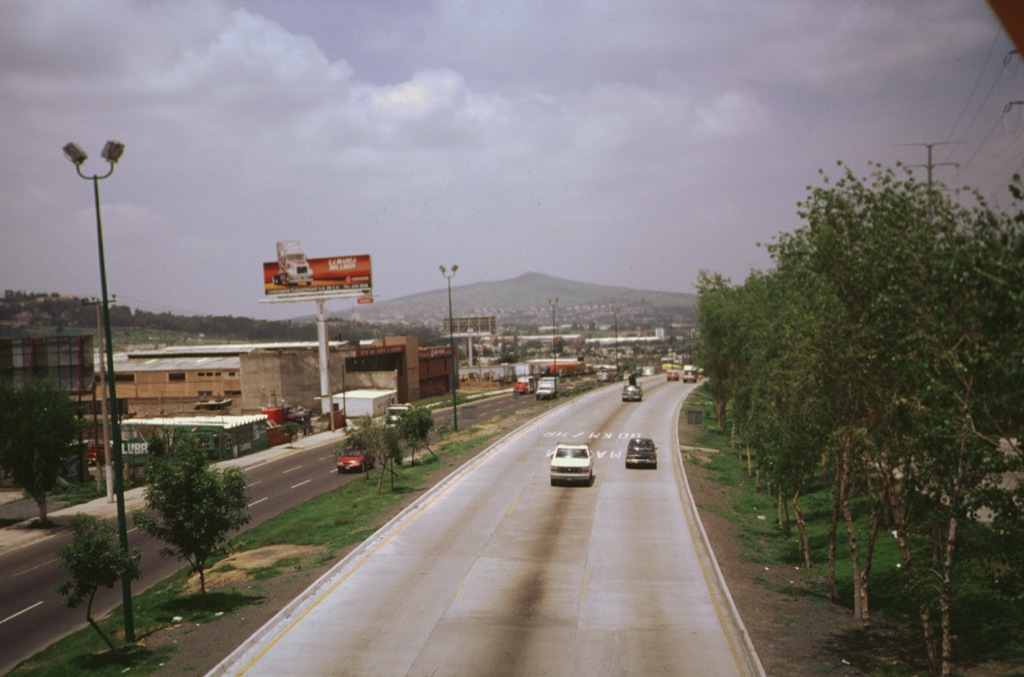Image GVP-08017

Guadalajara, México's second largest city, partially overlies a chain of nine basaltic andesite volcanic centers of Plio-Pleistocene age. The volcanoes were constructed along a NW-SE-trending line that cuts through the southern portion of the city. The centers range from small cinder cones, such as Cerro San Bartolo, to larger composite volcanoes. The largest volcanoes are located at the SE end of the chain. This view shows the streets and buildings of Guadalajara partially overlapping one of the westernmost cones.
Photo by Julian Flores, 1999 (University of Guadalajara).
![]() This image is made available under the Creative Commons BY-NC 4.0 license terms.
This image is made available under the Creative Commons BY-NC 4.0 license terms.

Southern Guadalajara
